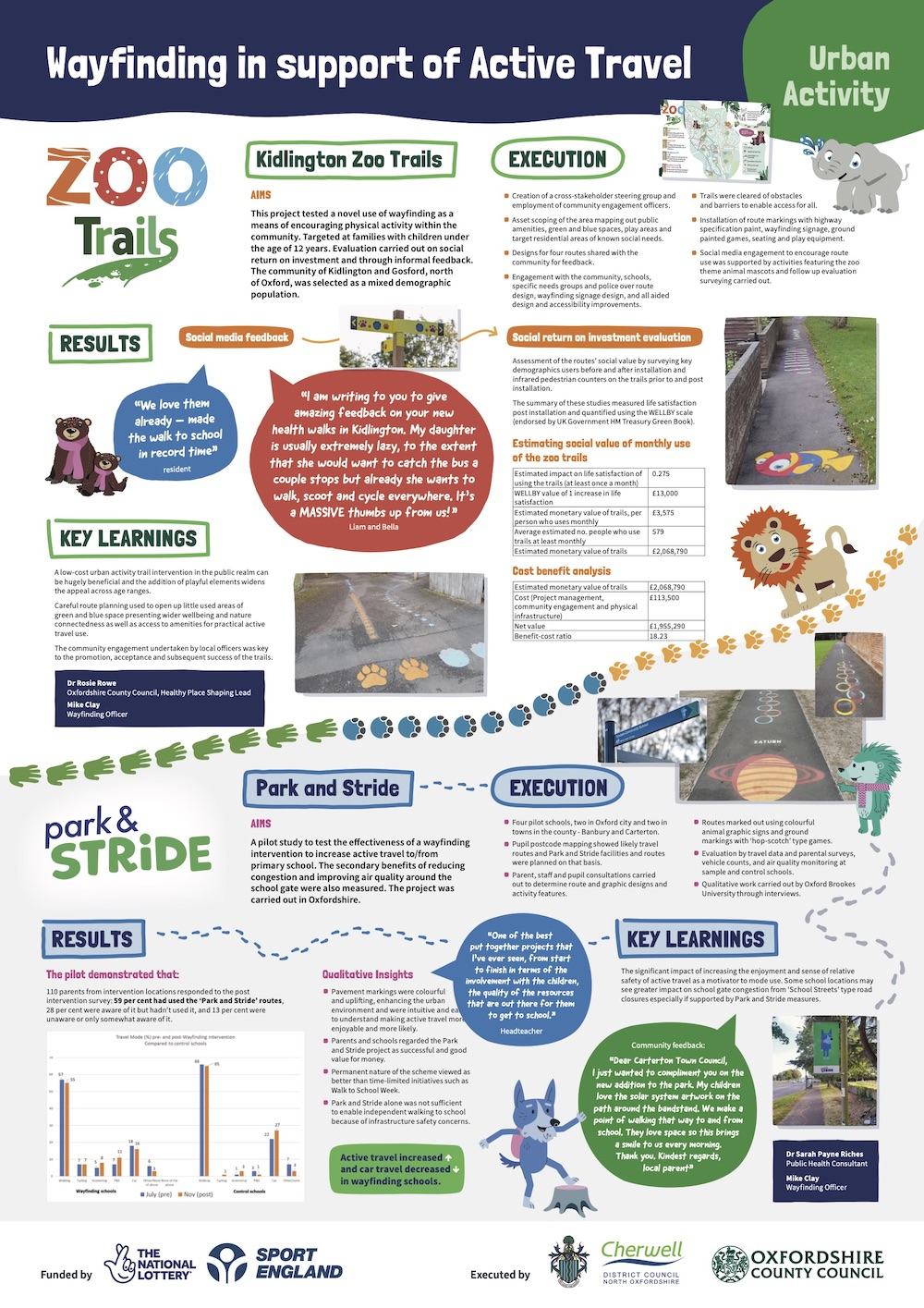Cities / Wayfinding
Healthy City Design 2022
Wayfinding in support of active travel
By Rosie Rowe and Mike Clay | 21 Dec 2022 | 0
This project was designed to assess the effectiveness and social impact of wayfinding to encourage physical activity in families with young children, with a particular focus on low-income, low-activity groups.
Abstract
It tests the use of novel wayfinding approaches, co-designed with local stakeholders and residents, to support local communities into increased levels of walking – with a focus on increasing duration and intensity of a walk.
The pilot was undertaken in Kidlington, a residential area on the outskirts of Oxford.
Intervention: Five, zoo-themed walking trails were co-designed with local residents and stakeholders and installed in Kidlington, More than 180 people took part in test-walks on the proposed routes, including officers from Thames Valley Police and representatives from Oxfordshire Association for the Blind. The feedback resulted in five circular trails being chosen, each being given an animal theme, reflecting Kidlington’s history as being home to Oxford Zoo in the 1930s. The trails aimed to support access to local assets and amenities, such as green spaces and primary schools in support of active travel. The precise routes were informed by resident feedback and have been designed to be accessible and user-friendly, including the provision of short-cuts, so that all ages and abilities can enjoy them.
Each path is easy to follow, with animal paw prints painted on the ground and signposts provided to help people find their way. The trails vary in length, from 1.7km to 5km, offering a slightly different experience for the walker. People can join the circuits at any point with central signage at a community centre marking the official start and end points. A child-friendly map was also created and distributed.
Features include child-friendly games painted on the ground, bug houses, scramble boulders, and balancing logs, each adding interest on the way, while benches provide a point for rest and relaxation.
Outcomes: A social Impact evaluation is currently underway and will report on:
- changes in people’s stated activity levels;
- changes in mental wellbeing;
- and the wider social value of the wayfinding trails.
Implications: The study will report on the wider benefits of wayfinding in improving community connectivity through enhancements to the public realm, as well as its potential to improve individual physical and mental health.
Organisations involved

